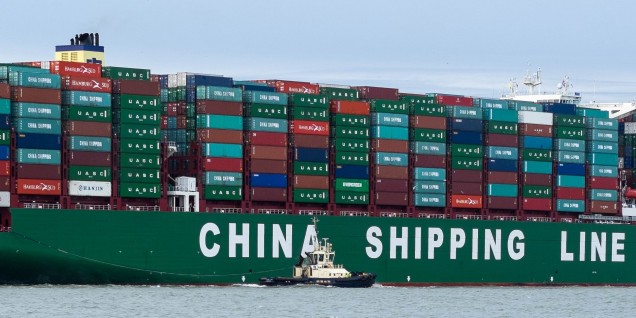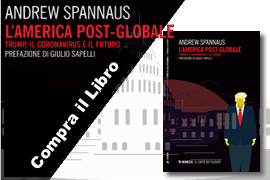(free) – by Paolo Balmas – In an interview with the American Prospect published just two days before leaving the White House on August 18th, 2017, then chief strategist of the Trump administration Steve Bannon argued that the United States is at war, an economic war against China. According to Bannon, Washington should focus “maniacally” on this economic war, and he told the interviewer that the confrontation with the nuclear-armed North Korea is nothing but “a sideshow”. As Transatlantico.info has already reported, Bannon’s position on the Korean issue was completely different than the main orientation which had taken shape in the Administration in the recent period. The Pentagon, in response to an official request from the President, has begun to evaluate a military option. Bannon thought that option was impossible to pursue without taking responsibility for the loss of millions of South Korean lives.
The economic war against China was a major theme during the 2016 presidential campaign, when Trump and Bannon tried and almost succeeded in shifting the narrative regarding America’s main enemy, from Moscow to Beijing. That political operation had two objectives. First, to enhance cooperation and build a new alliance with Russia, which would trigger a new posture towards Europe and the Middle East. Second, pointing the finger against China buttressed Trump’s position on the renaissance of the American economy and the protection of the American labor market, the America First campaign. Though the narrative worked for campaign needs, U.S.-China economic and financial relations couldn’t be put in jeopardy, as they are deeper than one could expect.
President Trump has recast the view of U.S.-China relations because of his protectionist posture, although the Administration is far from taking radical positions which could threaten the current trade and political relationships. It seems impossible to bring the factories back to America. Some American producers who operate in China are interested, to some extent, to move from China, but their potential interest is focused more on new emerging markets such as Indonesia, Bangladesh, or India. General Motors produces and sells 2.5 million cars in China every year; Hewlett-Packard produces computers in China which head west to the European market through the rail connections across the Eurasian continent. American business has benefited from outsourcing to China, but the scenario has been changing in the last few years. Now, the products that Western producers are exporting from China are challenged by China’s own products, from steel bars to smartphones.
There exist different schools on economic warfare, and especially on economic war against China. Some think that the absorption of the Chinese economy into the Western system is the best, if not the only way, to contain Chinese power. From this standpoint, the entry of the Chinese currency, the Renminbi (RMB), into the IMF basket of reserve currencies, is a step forward in a long and slow process of confrontation and integration. Nevertheless, there are some more immediate issues which cannot wait for the resolution of a long-term economic and financial war. The steel market, the basis for the dumping allegations against China, is a major instance. In this case, both Washington and the EU are acting from a protectionist perspective.
A single market sector or a specific (short) list of products, will not affect U.S.-China trade relations. In 2016, the exchanges between the two powers reached $579 billion, making China the United States’ largest partner. Beyond the political narratives, Washington is concerned about the deficit produced by U.S.-China trade ($347 billion). The U.S. exported only $115 billion in goods and services. But official reports do not take in consideration the re-export of U.S. goods from Hong Kong to China, or sales by U.S. producers based in China. The real value of the Chinese market for U.S. firms is about $400 billion, which makes China the top market for the United States’ economy. And the growth continues, thanks to the lifting of the ban on crude oil exports in December 2015 by the Obama administration. Today China is a major, growing market for U.S. crude exports.
Though many observers think war against China will be inevitable in future, we are still far from such a possibility. The current economic war is limited to the containment of specific markets and products, and, more importantly, involves pressure from outside to ensure those structural reforms that would allow Western powers to penetrate the wealth of the Chinese nation, which now is mostly state-controlled. Bannon was probably right, though his tone was excessive, when he told the American Prospect North Korea was a “sideshow”. But it remains to be seen if and how the Korean peninsula is connected to the U.S.-China confrontation. This opens a window on another aspect of the economic war against China, which is the containment of the Belt and Road Initiative and the development of the North Pacific region.
Subscribe to access all news items







September 9, 2017
Economia, English, Strategia